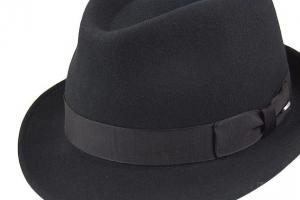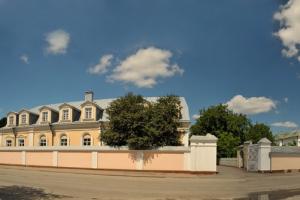Hello, friends. What optimal mode operation of a gas boiler? There are a number of determining factors here. These are the conditions of its work, its potential, its design, etc.
The main motive for searching for the best regime is economic benefit. At the same time, the equipment must produce maximum efficiency, and consume minimal fuel.
Factors affecting boiler operation
They are:
- Design. The equipment may have 1 or 2 circuits. It can be mounted on a wall or on the floor.
- Normative and actual efficiency.
- Proper heating arrangement. The power of the equipment is comparable to the area that needs to be heated.
- Technical conditions of the boiler.
- Gas quality.
All these points need to be optimized so that the device produces the best efficiency,
Question about the design.

The device may have 1 or 2 circuits. The first option is complemented by an indirect heating boiler. The second one already has everything you need. And the key mode in it is ensuring hot water. When water is supplied, heating ends.
Models mounted on the wall have less power than those placed on the floor. And they can heat a maximum of 300 sq.m. If your living space is larger, you will need a floor-mounted unit.
P.2 efficiency factors.

The document for each boiler reflects the standard parameter: 92-95%. For condensation modifications it is approximately 108%. But the actual parameter is usually 9-10% lower. It decreases even more due to heat losses. Their list:
- Physical underburning. The reason is excess air in the apparatus when gas is burned, and the temperature of the exhaust gases. The larger they are, the more modest the efficiency of the boiler.
- Chemical underburning. What is important here is the volume of CO2 oxide produced when carbon is burned. Heat is lost through the walls of the apparatus.
Methods for increasing the actual efficiency of a boiler:
- Removing soot from pipelines.
- Elimination of scale from the water circuit.
- Limit chimney draft.
- Adjust the position of the blower door so that the coolant reaches its maximum temperature.
- Removing soot from the combustion compartment.
- Installation of a coaxial chimney.
P.3 Questions about heating. As already noted, the power of the device necessarily correlates with the heating area. A competent calculation is needed. The specifics of the structure and potential heat losses are taken into account. It is better to entrust the calculation to a professional.
If the house is built according to building codes, the formula works: 100 W per 1 sq.m. This results in a table like this:
| Area (sq.m.) | Power. | ||
| Minimum | Maximum | Minimum | Maximum |
| 60 | 200 | 25 | |
| 200 | 300 | 25 | 35 |
| 300 | 600 | 35 | 60 |
| 600 | 1200 | 60 | 100 |
Purchase better boilers foreign production. Also in advanced versions there are many useful options that help you achieve the optimal mode. One way or another, the optimal power of the device is in the spectrum of 70-75% of the highest value.
Technical conditions. To extend the service life of the device, promptly remove soot and scale from internal parts.
The optimal operating mode of a gas boiler to save gas is achieved by eliminating clocking. That is, you need to set the gas supply to the lowest value. The attached instructions will help with this.
There is an aspect that cannot be influenced - the quality of the gas.
Methods for setting the optimal mode
Many devices are programmed for the temperature of the coolant. When it reaches the required values, the unit turns off briefly. The user can set the temperature himself. The parameters also change depending on the weather. For example, the optimal operating mode of a gas boiler in winter is obtained at values of 70-80 C. In spring and autumn - at 55 - 70 C.
IN modern models There are temperature sensors, thermostats and automatic mode settings.
Thanks to the thermostat, you can set the desired climate in the room. And the coolant will heat up and cool down with a specific intensity. At the same time, the device reacts to temperature changes in the house and outside. This is the optimal operating mode for a floor-standing gas boiler. Although with the help of such devices it is possible to optimize and mounted model. At night, the settings can be reduced by 1-2 degrees.
Thanks to these devices, gas is consumed by 20% less.
If you want solid efficiency and savings from the boiler, purchase the right model. The following are some examples.
Examples of models
- Baxi.

The optimal operating mode of this wall-mounted gas boiler is achieved as follows: small apartments indicators are set to F08 and F10. The modulation spectrum starts at 40% of the highest power. And the minimum possible operating mode is 9 kW.

Many models of this company are very economical and can operate at low gas pressure. Pressure limits: 9 – 17 mbar. Suitable voltage range: 165 – 240 V.
- Vaillant.

Many devices of this brand work optimally under the following conditions: power - 15 kW. The feed is set at 50-60. The device works for 35 minutes, rests for 20 minutes.
- Ferroli.

The best conditions: 13 kW for heating, 24 kW for water heating.
- Mercury.

Water pressure in the network is maximum 0.1 MPa. The highest temperature indicator at the outlet section is 90 C, the nominal value of the flue gases is at least 110 C. The vacuum behind the apparatus is a maximum of 40 Pa.
- Navien.

Basically, these are two-circuit units. Automation works here. The mode is customizable. The room heating parameter is set. There is a pump that can reduce parameters by 4-5 degrees.
- Ariston.

Automatic setting of modes also works. Often people choose models with the Comfort Plus mode.
- Buderus.

The following values are usually set on the feed: 40 - 82 C. The current parameter is usually reflected on the monitor. The most comfortable summer mode– at 75 C.
Conclusion
Thanks to a gas boiler, you can conveniently adjust the climate in your home. Especially if you use innovative technology with automated modes and many useful options.
2.KIT of the boiler at different temperatures entering it
The lower the temperature that enters the boiler, the greater the temperature difference on different sides of the boiler heat exchanger partition, and the more efficiently heat transfers from the exhaust gases (combustion products) into the heat exchanger wall. Let me give you an example with two identical kettles placed on identical burners. gas stove. One burner is set to maximum flame and the other to medium. The kettle that is on the highest flame will boil faster. And why? Because the temperature difference between the combustion products under these kettles and the water temperature for these kettles will be different. Accordingly, the rate of heat transfer at a larger temperature difference will be greater.
In relation to a heating boiler, we cannot increase the combustion temperature, as this will lead to most of our heat (products of gas combustion) will fly out through the exhaust pipe into the atmosphere. But we can design our heating system (hereinafter referred to as CO) in such a way as to lower the temperature entering into, and therefore lower the average temperature circulating through. The average temperature at the return (input) to and supply (outlet) from the boiler will be called the “boiler water” temperature.
As a rule, the 75/60 mode is considered the most economical thermal operating mode of a non-condensing boiler. Those. with a supply (boiler outlet) temperature of +75 degrees, and a return (boiler inlet) temperature of +60 degrees Celsius. A link to this thermal mode is in the boiler passport, when indicating its efficiency (usually the 80/60 mode is indicated). Those. in a different thermal mode, the efficiency of the boiler will be lower than that stated in the passport.
That's why modern system The heating system must operate in the design (for example 75/60) thermal mode throughout the heating period, regardless of the outside temperature, except when using an outside temperature sensor (see below). Regulation of the heat transfer of heating devices (radiators) during the heating period should be carried out not by changing the temperature, but by changing the flow rate through the heating devices (the use of thermostatic valves and thermoelements, i.e. “thermal heads”).
To avoid the formation of acid condensate on the boiler heat exchanger, for a non-condensing boiler the temperature in its return (inlet) should not be lower than +58 degrees Celsius (usually taken with a margin as +60 degrees).
I will make a reservation that the ratio of air and gas entering the combustion chamber also plays a significant role in the formation of acid condensate. The greater the excess air entering the combustion chamber, the less acid condensate. But we shouldn’t be happy about this, since excess air leads to a large overconsumption of gas fuel, which ultimately “hits us in the pocket.”
As an example, I will give a photo showing how acid condensate destroys the boiler heat exchanger. The photo shows the heat exchanger of a Vailant wall-mounted boiler, which worked for only one season in an incorrectly designed heating system. Quite severe corrosion is visible on the return (input) side of the boiler.

For condensation systems, acid condensate is not dangerous. Since the heat exchanger of the condensing boiler is made of special high-quality alloyed of stainless steel, which is “not afraid” of acid condensate. Also, the design of the condensing boiler is designed in such a way that the acidic condensate flows through a tube into a special container for collecting condensate, but does not fall on any electronic components and components of the boiler, where it could damage these components.
Some condensing boilers are able to change the temperature at their return (input) themselves due to a smooth change in power by the boiler processor circulation pump. Thereby increasing the efficiency of gas combustion.
For additional gas savings, use the connection of an outdoor temperature sensor to the boiler. Most wall units have the ability to automatically change the temperature depending on the outside temperature. This is done so that when the outside temperature is warmer than the temperature of the cold five-day period (the most severe frosts), the temperature of the boiler water is automatically lowered. As stated above, this reduces gas consumption. But when using a non-condensing boiler, it is important not to forget that when the temperature of the boiler water changes, the temperature at the return (inlet) of the boiler should not fall below +58 degrees, otherwise acid condensate will form on the boiler heat exchanger and destroy. To do this, during commissioning of the boiler, in the boiler programming mode, such a curve is selected depending on the temperature on the street temperature, at which the temperature in the boiler return would not lead to the formation of acidic condensate.
I would like to immediately warn you that when using a non-condensing boiler and plastic pipes in the heating system, installing an outdoor temperature sensor is almost pointless. Since we can design for the long-term service of plastic pipes the temperature at the boiler supply is not higher than +70 degrees (+74 during the cold five-day period), and in order to avoid the formation of acid condensate, we can design the temperature at the boiler return not lower than +60 degrees. These narrow “frames” make the use of weather-sensitive automation useless. Since such frames require temperatures in the range of +70/+60. Already when using copper or steel pipes in the heating system, it already makes sense to use weather-dependent automation in heating systems, even when using a non-condensing boiler. Since it is possible to design a boiler thermal mode of 85/65, which mode can change under the control of weather-dependent automation, for example, to 74/58 and provide savings in gas consumption.
I will give an example of an algorithm for changing the temperature at the boiler supply depending on the outside temperature using the example of the Baxi Luna 3 Komfort boiler (below). Also, some boilers, for example, Vaillant, can maintain a set temperature not in their supply, but in their return. And if you have set the return temperature maintenance mode to +60, then you do not have to worry about the appearance of acidic condensation. If in this case the temperature at the boiler supply changes up to +85 degrees inclusive, but if you use copper or steel pipes, then such a temperature in the pipes does not reduce their service life.

From the graph we see that, for example, when selecting a curve with a coefficient of 1.5, it will automatically change the temperature at its supply from +80 at an outside temperature of -20 degrees and below, to a supply temperature of +30 at an outside temperature of +10 (in the middle section flow temperature + curve.
But how much will a supply temperature of +80 reduce the service life of plastic pipes (Reference: according to manufacturers, the warranty service life plastic pipe at a temperature of +80, is only 7 months, so don’t expect 50 years), or a return temperature below +58 will reduce the service life of the boiler; unfortunately, there is no exact data provided by the manufacturers.
And it turns out that when using weather-compensated automation with non-condensing gas, you can save gas, but it is impossible to predict how much the service life of the pipes and boiler will decrease. Those. in the case described above, the use of weather-sensitive automation will be at your own peril and risk.
Thus, it makes the most sense to use weather-compensating automation when using a condensing boiler and copper (or steel) pipes in the heating system. Since weather-dependent automation will be able to automatically (and without harm to the boiler) change the thermal mode of the boiler from, for example, 75/60 for a cold five-day period (for example, -30 degrees outside) to 50/30 mode (for example, +10 degrees outside) street). Those. you can painlessly select the dependence curve, for example, with a coefficient of 1.5, without fear of high boiler supply temperatures in cold weather, and at the same time without fear of the appearance of acid condensate during thaws (for condensation systems, the formula is valid that the more acid condensate is formed in them, the more they save gas). For interest, I will post a graph of the dependence of the CIT of a condensing boiler, depending on the temperature in the boiler return.

3.KIT of the boiler depending on the ratio of the mass of gas to the mass of air for combustion.
The more completely it burns gas fuel in the combustion chamber of the boiler, the more heat we can get from burning a kilogram of gas. The completeness of gas combustion depends on the ratio of the mass of gas to the mass of combustion air entering the combustion chamber. This can be compared to adjusting the carburetor in a car's internal combustion engine. The better the carburetor is tuned, the less for the same engine power.
To adjust the ratio of gas mass to air mass in modern boilers, it is used special device, dosing the amount of gas supplied to the combustion chamber of the boiler. It is called a gas valve or an electronic power modulator. The main purpose of this device is automatic modulation of boiler power. Also, adjustment of the optimal gas to air ratio is carried out on it, but manually, once during commissioning of the boiler.
To do this, during commissioning of the boiler, you need to manually adjust the gas pressure using a differential pressure gauge on special control fittings of the gas modulator. Two pressure levels are adjustable. For maximum power mode, and for minimum power mode. The method and instructions for setting up are usually set out in the boiler’s passport. You don’t have to buy a differential pressure gauge, but make it from a school ruler and a transparent tube from a hydraulic level or a blood transfusion system. The gas pressure in the gas line is very low (15-25 mbar), less than when a person exhales, therefore, in the absence of an open fire nearby, such adjustment is safe. Unfortunately, not all service technicians, when commissioning a boiler, carry out the procedure for adjusting the gas pressure on the modulator (out of laziness). But if you need to get the most gas-efficient operation of your heating system, then you must carry out such a procedure.
Also, during commissioning of the boiler, it is necessary, according to the method and table (given in the boiler passport), to adjust the cross-section of the diaphragm in the air duct pipes of the boiler, depending on the power of the boiler and the configuration (and length) of the exhaust and combustion air intake pipes. The correct ratio of the volume of air supplied to the combustion chamber to the volume of gas supplied also depends on the correct choice of this diaphragm section. The correct ratio ensures the most complete combustion of gas in the combustion chamber of the boiler. And, therefore, it reduces to the necessary minimum gas consumption. I will give (for an example of the methodology correct installation diaphragm) scan from the boiler passport Baksi Nuvola 3 Comfort -

4. KIT of the boiler depending on the temperature of the combustion air entering it.
Also, the efficiency of gas consumption depends on the temperature of the air entering the combustion chamber of the boiler. The boiler efficiency given in the passport is valid for the air temperature entering the boiler combustion chamber of +20 degrees Celsius. This is explained by the fact that when colder air enters the combustion chamber, part of the heat is spent to warm up this air.
There are “atmospheric” boilers, which take combustion air from the surrounding space (from the room in which they are installed) and “turbo boilers” with a closed combustion chamber, into which air is forced into by means of a turbocharger located in the boiler. All other things being equal, a “turbo boiler” will have greater gas consumption efficiency than an “atmospheric” one.
If everything is clear with the “atmospheric” boiler, then with the “turbo boiler” questions arise about where it is better to take air into the combustion chamber from. The “turbo boiler” is designed in such a way that the flow of air into its combustion chamber can be organized from the room in which it is installed, or directly from the street (via a coaxial chimney, i.e. a “pipe-in-pipe” chimney). Unfortunately, both of these methods have pros and cons. When air comes from interior spaces at home, the combustion air temperature is higher than when taken from the street, but all the dust generated in the house is pumped through the combustion chamber of the boiler, clogging it. The combustion chamber of the boiler is especially clogged with dust and dirt when carrying out finishing works in the house.
Don't forget that for safe work“atmospheric” or “turbo boiler” with air intake from the premises of the house, it is necessary to organize the correct operation of the supply part of the ventilation. For example, supply valves on the windows of the house must be installed and opened.


Also, when removing boiler combustion products upward through the roof, it is worth considering the cost of manufacturing an insulated chimney with a condensate drain.
Therefore, coaxial chimney systems “through the wall to the street” are becoming most popular (including for financial reasons). Where exhaust gases are emitted through the inner pipe, and combustion air is pumped in from the street through the outer pipe. In this case, the exhaust gases heat the combustion air sucked in, since the coaxial pipe acts as a heat exchanger.
5.KIT of the boiler depending on the time of continuous operation of the boiler (lack of “clocking” of the boiler).
Modern boilers themselves adjust their output thermal power, under the thermal power consumed by the heating system. But the limits of power auto-tuning are limited. Most non-condensing ones can modulate their power from about 45 to 100% of rated power. Condenser modulate power in a ratio of 1 to 7 and even 1 to 9. That is. a non-condensing boiler with a rated power of 24 kW will be able to produce at least, for example, 10.5 kW in continuous operation. And condensing, for example, 3.5 kW.
If, however, the temperature outside is much warmer than on a cold five-day period, then there may be a situation where the heat loss at home is less than the minimum possible power generated. For example, the heat loss of a house is 5 kW, and the minimum modulated power is 10 kW. This will lead to periodic shutdown of the boiler when the set temperature at its supply (outlet) is exceeded. It may happen that the boiler turns on and off every 5 minutes. Frequent switching on/off of the boiler is called “clocking” of the boiler. In addition to reducing the service life of the boiler, clocking also significantly increases gas consumption. Let me compare gas consumption in clocking mode with gasoline consumption in a car. Consider that gas consumption during pacing is equivalent to driving in city traffic jams in terms of fuel consumption. And the continuous operation of the boiler means driving on a free highway in terms of fuel consumption.
The fact is that the boiler processor contains a program that allows the boiler, using sensors built into it, to indirectly measure the thermal power consumed by the heating system. And adjust the generated power to this need. But the boiler takes from 15 to 40 minutes for this, depending on the capacity of the system. And in the process of adjusting its power, it does not operate in the optimal gas consumption mode. Immediately after switching on the boiler modulates maximum power and only over time, gradually using the approximation method, it reaches the optimal gas flow. It turns out that when the boiler cycles more often than 30-40 minutes, it does not have enough time to reach the optimal mode and gas consumption. After all, with the start of a new cycle, the boiler begins selecting power and mode again.
To eliminate boiler clocking, install room thermostat. It is better to install it on the ground floor in the middle of the house and, if there is a heating device in the room where it is installed, then the IR radiation of this heating device should reach the room thermostat at a minimum. Also, this heating device must not have a thermocouple (thermal head) installed on the thermostatic valve.
Many boilers are already equipped with a remote control panel. The room thermostat is located inside this control panel. Moreover, it is electronic and programmable by time zones of the day and days of the week. Programming the temperature in the house by time of day, by day of the week, and when you leave for several days, also allows you to save significantly on gas consumption. Instead of a removable control panel, a decorative plug is installed on the boiler. As an example, I will give a photo of a removable Baxi Luna 3 Komfort control panel installed in the hall of the first floor of the house, and a photo of the same boiler installed in the boiler room attached to the house with a decorative plug installed instead of the control panel.

6. Use of a greater proportion of radiant heat in heating devices.
You can also save any fuel, not just gas, by using heating devices with a higher proportion of radiant heat.
This is explained by the fact that a person does not have the ability to feel temperature environment. A person can only feel the balance between the amount of heat received and given out, but not the temperature. Example. If we hold an aluminum block with a temperature of +30 degrees in our hands, it will seem cold to us. If we pick up a piece of foam plastic with a temperature of -20 degrees, then it will seem warm to us.
In relation to the environment in which a person is located, in the absence of drafts, a person does not feel the temperature of the surrounding air. But only the temperature of the surfaces surrounding it. Walls, floors, ceilings, furniture. I will give examples.
Example 1. When you go down to the cellar, after a few seconds you feel chilly. But this is not because the air temperature in the cellar is, for example, +5 degrees (after all, air in a still state is the best heat insulator, and you could not freeze from heat exchange with the air). And because the balance of the exchange of radiant heat with surrounding surfaces has changed (your body has a surface temperature on average of +36 degrees, and the cellar has a surface temperature on average of +5 degrees). You begin to give off much more radiant heat than you receive. That's why you feel cold.
Example 2. When you are in a foundry or steel smelting shop (or just near a big fire), you feel hot. But this is not because the air temperature is high. In winter, with partially broken windows in the foundry, the air temperature in the workshop can be -10 degrees. But you are still very hot. Why? Of course, air temperature has nothing to do with it. The high temperature of surfaces, rather than air, changes the balance of radiant heat exchange between your body and the environment. You begin to receive much more heat than you emit. Therefore, people working in foundries and steel smelting shops are forced to wear cotton pants, quilted jackets and earflap hats. To protect not from cold, but from too much radiant heat. To avoid getting heatstroke.
From here we draw a conclusion that many modern heating specialists do not realize. That it is necessary to heat the surfaces surrounding a person, but not the air. When we heat only the air, first the air rises to the ceiling, and only then, as it descends, the air heats the walls and floor due to the convective circulation of air in the room. Those. at first warm air rises to the ceiling, heating it, then along the far side of the room descends to the floor (and only then the floor surface begins to heat up) and further in a circle. With this purely convective method of heating rooms, an uncomfortable temperature distribution throughout the room occurs. When is the most heat indoors at head level, medium at waist level, and lowest at foot level. But you probably remember the proverb: “Keep your head cold and your feet warm!”

It is no coincidence that SNIP states that in a comfortable home, the temperature of the surfaces of the external walls and floors should not be lower than the average temperature in the room by more than 4 degrees. Otherwise, the effect is that it is simultaneously hot and stuffy, but at the same time chilly (including on the legs). It turns out that in such a house you need to live “in shorts and felt boots.”
So, from afar, I was forced to bring you to the realization of which heating devices are best to use in the house, not only for comfort, but also to save fuel. Of course, heating devices, as you may have guessed, need to be used with the greatest proportion of radiant heat. Let's see which heating devices give us the largest share of radiant heat.
Perhaps, such heating devices include the so-called “warm floors”, as well as “ warm walls"(gaining more and more popularity). But among the usually most common heating devices, steel ones can be distinguished by the largest proportion of radiant heat. panel radiators, tubular radiators and cast iron radiators. I am forced to believe that the largest share of radiant heat is provided by steel panel radiators, since the manufacturers of such radiators indicate the share of radiant heat, while the manufacturers of tubular and cast iron radiators keep this secret. I also want to say that aluminum and bimetallic “radiators” that have recently received no right to be called radiators. They are called that only because they are the same sectional as cast iron radiators. That is, they are called “radiators” simply “by inertia”. But according to the principle of their action, aluminum and bimetallic radiators should be classified as convectors, not radiators. Since their share of radiant heat is less than 4-5%.
For panel ones steel radiators The proportion of radiant heat varies from 50% to 15% depending on the type. The largest proportion of radiant heat is found in panel radiators of type 10, in which the proportion of radiant heat is 50%. Type 11 has a radiant heat fraction of 30%. Type 22 has a radiant heat fraction of 20%. Type 33 has a radiant heat fraction of 15%. There are also steel panel radiators produced using the so-called X2 technology, for example from Kermi. It is a type 22 radiator, in which it passes first along the front plane of the radiator, and only then along the rear plane. Due to this, the temperature of the front plane of the radiator increases relative to the rear plane, and consequently the share of radiant heat, since only the IR radiation of the front plane enters the room.
The respected Kermi company claims that when using radiators made using X2 technology, fuel consumption is reduced by at least 6%. Of course, I personally did not have the opportunity to confirm or refute these figures in laboratory conditions, but based on the laws of thermophysics, the use of such technology really allows you to save fuel.
Conclusions. In a private house or cottage, I advise using steel panel radiators across the entire width of the window opening, in descending order of preference by type: 10, 11, 21, 22, 33. When the amount of heat loss in the room, as well as the width of the window opening and the height of the window sill do not allow the use types 10 and 11 (not enough power) and the use of types 21 and 22 is required, then if you have the financial opportunity, I advise you to use not the usual types 21 and 22, but using the X2 technology. If, of course, the use of X2 technology pays off in your case.
Reprinting is not prohibited,
with attribution and a link to this site.
The efficiency of a heating system depends on many factors. These include rated power, heat transfer rate of radiators and operating temperature conditions. For the last indicator, it is important to correctly select the degree of heating of the coolant. Therefore, it is necessary to determine the optimal temperature in the heating system for water, radiators and boiler.
What determines the temperature of water in heating
For proper operation heating system requires a graph of water temperature in the heating system. According to it, the optimal degree of heating of the coolant is determined depending on the influence of certain external factors. From it you can determine what temperature of water in the heating radiators should be during a certain period of time the system is operating.
A common misconception is that the higher the degree of heating of the coolant, the better. However, this increases fuel consumption and increases operating costs.
Often, the low temperature of radiators is not a violation of room heating standards. A low-temperature heating system was simply designed. That is why the accurate calculation of water heating should be given Special attention.
Optimal temperature water in heating pipes largely depends on external factors. To determine it, you need to take into account the following parameters:
- Heat loss at home. They are decisive for the calculation of any type of heat supply. Their calculation will be the first stage of heat supply design;
- Boiler characteristics. If the operation of this component does not meet the design requirements, the temperature of the water in the heating system of a private house will not rise to the required level;
- Material for making pipes and radiators. In the first case, it is necessary to use pipes with a minimum thermal conductivity. This will reduce heat losses in the system during transportation of coolant from the boiler heat exchanger to the radiators. For batteries, the opposite is important - high thermal conductivity. Therefore, the water temperature in the radiators central heating, made of cast iron, should be slightly higher than that of aluminum or bimetallic structures.
Is it possible to independently determine what temperature should be in the heating radiators? This depends on the characteristics of the system components. To do this, you should familiarize yourself with the properties of the batteries, boiler and heat supply pipes.
IN centralized system heating supply, the temperature of the heating pipes in the apartment is not an important indicator. It is important that air heating standards are observed in living rooms.
Heating standards in apartments and houses
In fact, the degree of heating of water in heating pipes and radiators is a subjective indicator. It is much more important to know the heat transfer of the system. It, in turn, depends on what the minimum and Maximum temperature water in the heating system can be achieved during operation.

For autonomous heat supply, central heating standards are quite applicable. They are set out in detail in Resolution of the PRF No. 354. It is noteworthy that the minimum water temperature in the heating system is not indicated there.
It is only important to observe the degree of heating of the air in the room. Therefore, in principle, the operating temperature of one system may be different from another. It all depends on the influencing factors mentioned above.
In order to determine what temperature should be in the heating pipes, you should familiarize yourself with the current standards. Their contents include a division into residential and non-residential premises, as well as the dependence of the degree of air heating on the time of day:
- In the rooms during the daytime. In this case, the standard heating temperature in the apartment should be +18°C for rooms in the middle of the house and +20°C in the corner ones;
- In living rooms at night. Some reduction is allowed. But at the same time, the temperature of the heating radiators in the apartment should provide +15°C and +17°C, respectively.
Responsible for compliance with these standards Management Company. If they are violated, you can request a recalculation of payment for heating services. For autonomous heat supply, a table of temperatures for heating is made, where the heating values of the coolant and the degree of load on the system are entered. However, no one bears responsibility for violating this schedule. This will affect the comfort of staying in a private home.
For centralized heating, it is mandatory to maintain the required level of air heating in staircases and non-residential premises. The water temperature in the heating radiators should be such that the air is heated to a minimum value of +12°C.
Calculation of heating operating temperature conditions
When calculating heat supply, it is necessary to take into account the properties of all components. This is especially true for radiators. What is the optimal temperature for heating radiators – +70°C or +95°C? It all depends on the thermal calculation, which is performed at the design stage.
First, it is necessary to determine the heat losses in the building. Based on the data obtained, a boiler with the appropriate power is selected. Then comes the most difficult design stage - determining the parameters of the heat supply batteries.
They must have a certain level of heat transfer, which will affect the temperature chart of the water in the heating system. Manufacturers indicate this parameter, but only for a certain operating mode of the system.
If to maintain a comfortable level of air heating in a room you need to spend 2 kW of thermal energy, then the radiators must have a no less heat transfer rate.
To determine this, you need to know the following quantities:
- The permissible maximum water temperature in the heating system ist1. It depends on the boiler power, temperature limit effects on pipes (especially polymer ones);
- Optimal the temperature that should be in the heating return pipes - t This is determined by the type of pipeline layout (one-pipe or two-pipe) and the total length of the system;
- The required degree of heating of the air in the room ist.
Tnap=(t1-t2)*((t1-t2)/2-t3)
Q=k*F*Tnap
Where k– heat transfer coefficient of the heating device. This parameter must be indicated in the passport; F– radiator area; Tnap– thermal pressure.
By varying various indicators of the maximum and minimum water temperatures in the heating system, you can determine the optimal operating mode of the system. It is important to correctly initially calculate the required power of the heating device. Most often, the low temperature indicator in heating radiators is associated with heating design errors. Experts recommend adding a small margin to the obtained radiator power value - about 5%. This will be needed if the outside temperature drops critically in winter.
Most manufacturers indicate the heat output of radiators according to accepted standards EN 442 for mode 75/65/20. This corresponds to the normal heating temperature in the apartment.
Water temperature in the boiler and heating pipes
After performing the above calculation, it is necessary to adapt the heating temperature table for the boiler and pipes. During operation, heat supply should not occur emergency situations, common cause which is a violation of the temperature schedule.

The normal water temperature in central heating radiators can be up to +90°C. This is strictly monitored at the stage of coolant preparation, its transportation and distribution to residential apartments.
Much the situation is more complicated with autonomous heat supply. In this case, control completely depends on the owner of the house. It is important to ensure that there is no excess temperature of the water in the heating pipes that goes beyond the established schedule. This may affect the safety of the system.
If the water temperature in the heating system of a private home exceeds the norm, the following situations may occur:
- Damage to pipelines. This is especially true for polymer lines, where the maximum heating can be +85°C. That is why the normal temperature of heating pipes in an apartment is usually +70°C. Otherwise, deformation of the line may occur and a gust may occur;
- Excess air heating. If the temperature of the heating radiators in the apartment provokes an increase in the degree of air heating above +27°C, this is outside the normal limits;
- Reduced service life of heating components. This applies to both radiators and pipes. Over time, the maximum water temperature in the heating system will lead to breakdown.
Also a violation of the water temperature schedule in the system autonomous heating provokes the formation of air pockets. This occurs due to the transition of the coolant from liquid to gaseous state. Additionally, this affects the formation of corrosion on the surface of the metal components of the system. That is why it is necessary to accurately calculate what temperature should be in the heat supply batteries, taking into account their material of manufacture.
Most often, a violation of the thermal operating conditions is observed in solid fuel boilers. This is due to the problem of adjusting their power. When a critical temperature level in the heating pipes is reached, it is difficult to quickly reduce the boiler power.
The influence of temperature on the properties of the coolant
In addition to the factors described above, the temperature of the water in the heating pipes affects its properties. This is the basis of the operating principle of gravity heating systems. As the heating level of water increases, it expands and circulation occurs.

However, if antifreeze is used, exceeding the normal temperature in the radiators can lead to different results. Therefore, for heating with a coolant other than water, you should first find out the permissible heating rates. This does not apply to radiator temperatures district heating in the apartment, since such systems do not use antifreeze-based liquids.
Antifreeze is used if there is a possibility that low temperatures will affect radiators. Unlike water, it does not begin to change from a liquid to a crystalline state when it reaches 0°C. However, if the heat supply operation exceeds the norms of the temperature table for heating to a greater extent, the following phenomena may occur:
- Foaming. This entails an increase in the volume of coolant and, as a result, an increase in pressure. The reverse process will not be observed when the antifreeze cools;
- Formation limescale . Antifreeze contains a certain amount of mineral components. If the heating temperature in the apartment is violated, they begin to precipitate. Over time, this will lead to clogged pipes and radiators;
- Increasing the density index. Malfunctions of the circulation pump may occur if its rated power was not designed for such situations.
Therefore, it is much easier to monitor the water temperature in the heating system of a private home than to control the degree of heating of antifreeze. In addition, when evaporating, ethylene glycol-based compounds emit gas that is harmful to humans. Currently, they are practically not used as a coolant in autonomous systems heat supply.
Before pouring antifreeze into the heating, you should replace all rubber gaskets with paranitic gaskets. This is due to the increased permeability of this type of coolant.
Methods for normalizing heating temperature
The minimum water temperature in the heating system is not the main threat to its operation. This, of course, affects the microclimate in residential premises, but in no way affects the functioning of the heat supply. If the water heating norm is exceeded, emergency situations may occur.

When drawing up a heating scheme, it is necessary to provide a number of measures aimed at eliminating a critical increase in water temperature. First of all, this will lead to an increase in pressure and an increase in load on inner surface pipes and radiators.
If this phenomenon is one-time and short-lived, the heat supply components may not be affected. However, such situations arise under the constant influence of certain factors. Most often this is a malfunction of the solid fuel boiler.
- Setting up a security group. It consists of an air vent, a bleed valve and a pressure gauge. If the water temperature reaches a critical level, these components will remove excess coolant, thereby ensuring normal circulation of the liquid for its natural cooling;
- Mixing unit. It connects the return and supply pipes. Additionally, a two-way valve with a servo drive is installed. The latter is connected to the temperature sensor. If the degree of heating exceeds the norm, the valve will open and the flow of hot and cooled water will mix;
- Electronic heating control unit. It records the water temperature in various parts of the system. In the event of a violation of the thermal regime, it will send the appropriate command to the boiler processor to reduce power.
These measures will help prevent incorrect heating operation even further. initial stage occurrence of a problem. It is most difficult to regulate the water temperature level in systems with a solid fuel boiler. Therefore, for them, special attention should be paid to the selection of parameters for the safety group and mixing unit.
The effect of water temperature on its circulation in heating is described in detail in the video:








